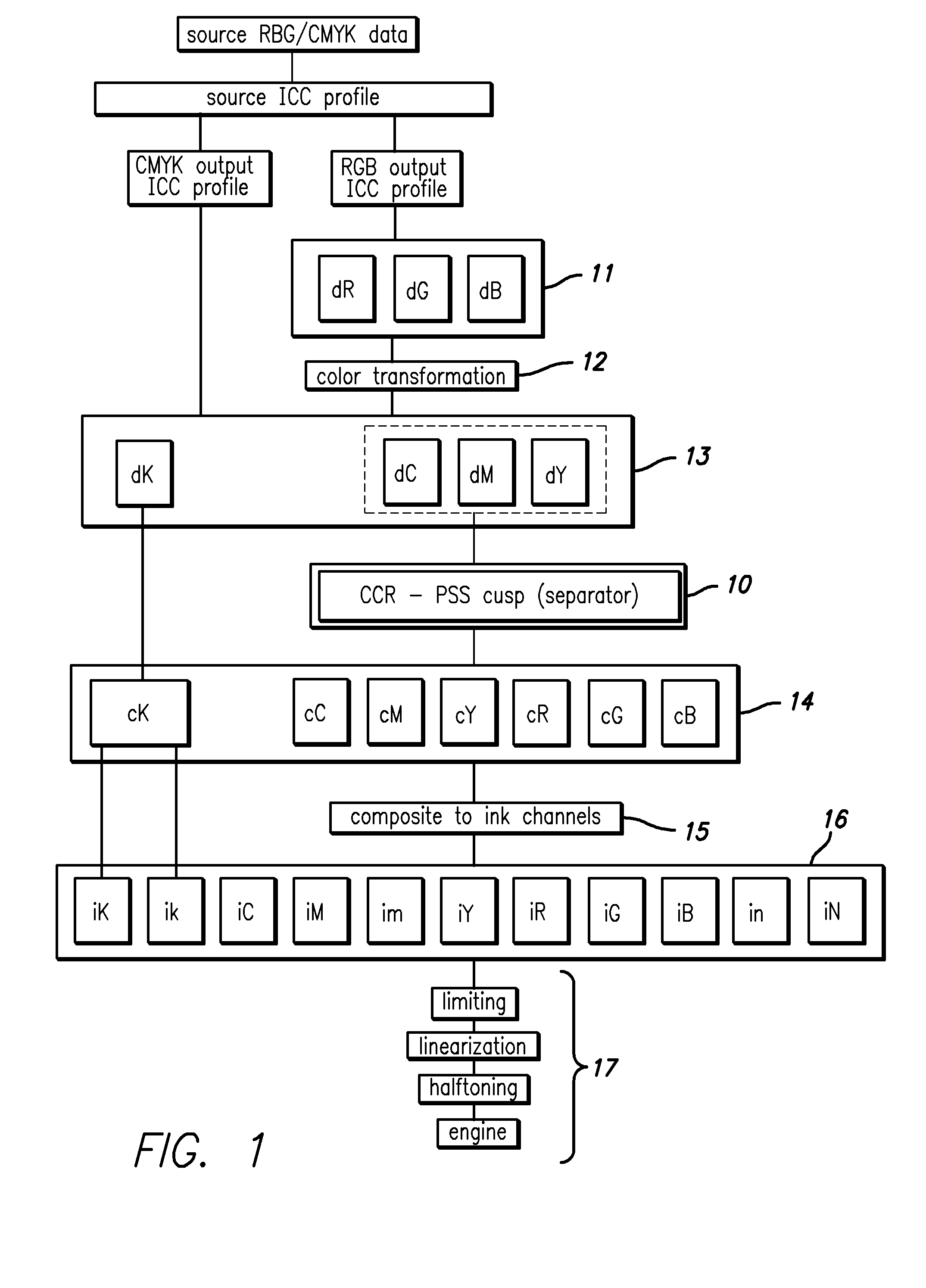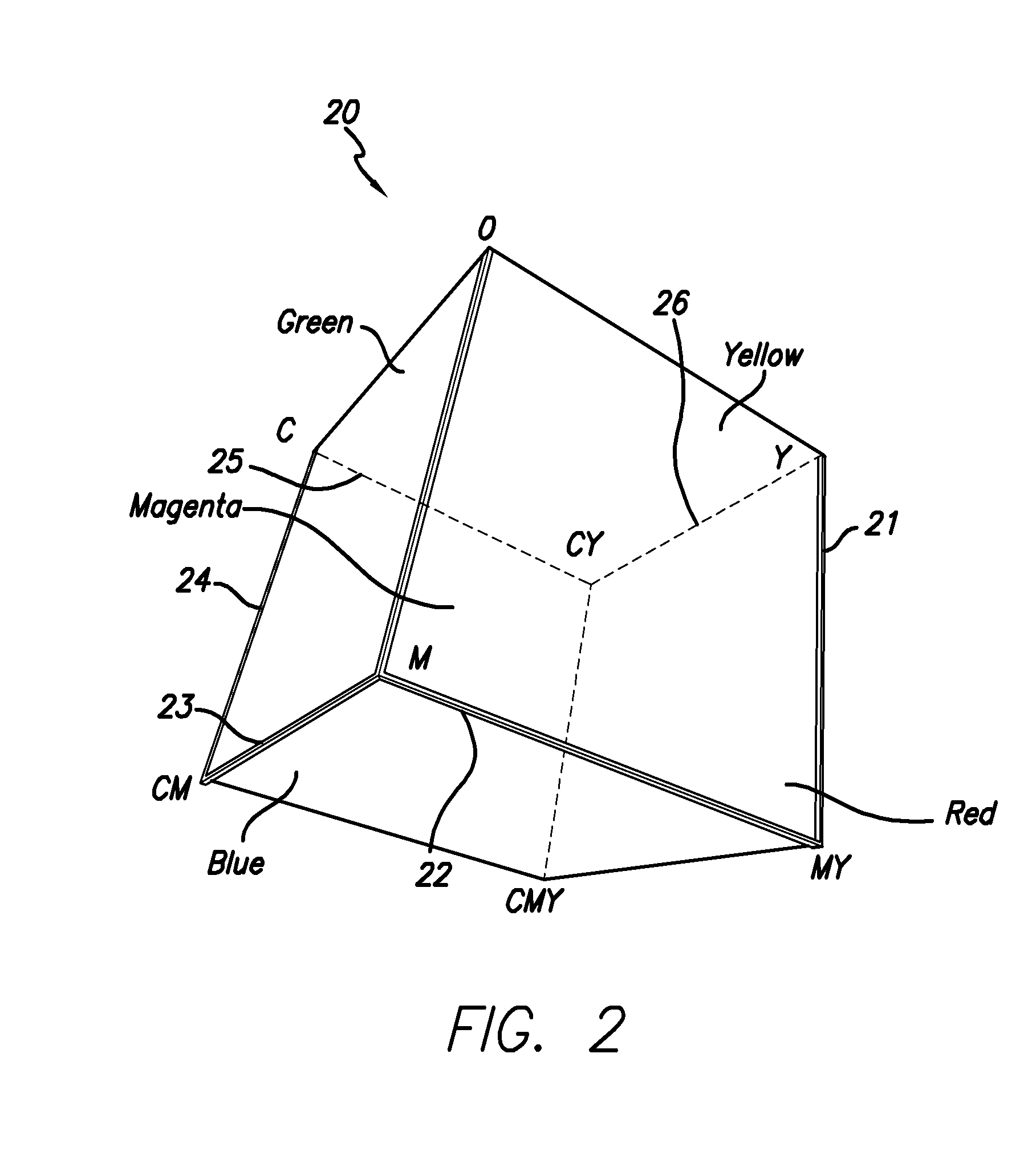Chromatic Component Replacement
- Summary
- Abstract
- Description
- Claims
- Application Information
AI Technical Summary
Benefits of technology
Problems solved by technology
Method used
Image
Examples
Embodiment Construction
[0093]THE OVERALL ROLE OF CCR IN MULTICOLOR SEPARATIONS—Preferred embodiments of the present “chromatic color replacement” (CCR) invention enable the making of color-separation choices automatically by computation, and for an arbitrary, expanded ink set—taking into account the behavior of a printer or other colorant-presentation device and the responses of a human viewer. Having the ability to compute separations on the basis of modeling the color-presentation device, colorants, and human perception automates optimization of printing performance for any combination of colorant that can be presented, and presentation medium, and for doing so on-the-fly.
[0094]Preferred forms of this CCR invention 10 (FIG. 1) replace the chromatic colorants of CMYK inputs 13—or portions of those inputs—with CMYK secondaries and other colorants. Those other colorants are expressly specified by an output-space colorant set—which can be, as noted above, substantially arbitrary.
[0095]These embodiments oper...
PUM
 Login to View More
Login to View More Abstract
Description
Claims
Application Information
 Login to View More
Login to View More - R&D
- Intellectual Property
- Life Sciences
- Materials
- Tech Scout
- Unparalleled Data Quality
- Higher Quality Content
- 60% Fewer Hallucinations
Browse by: Latest US Patents, China's latest patents, Technical Efficacy Thesaurus, Application Domain, Technology Topic, Popular Technical Reports.
© 2025 PatSnap. All rights reserved.Legal|Privacy policy|Modern Slavery Act Transparency Statement|Sitemap|About US| Contact US: help@patsnap.com



